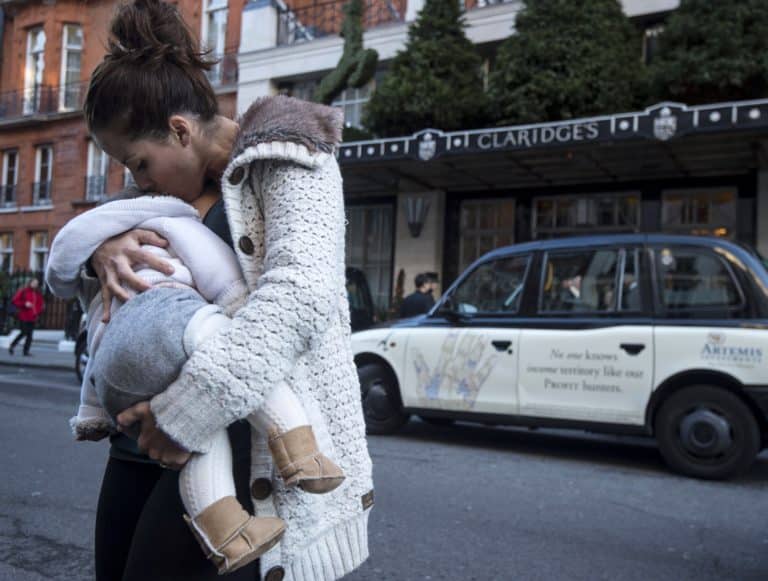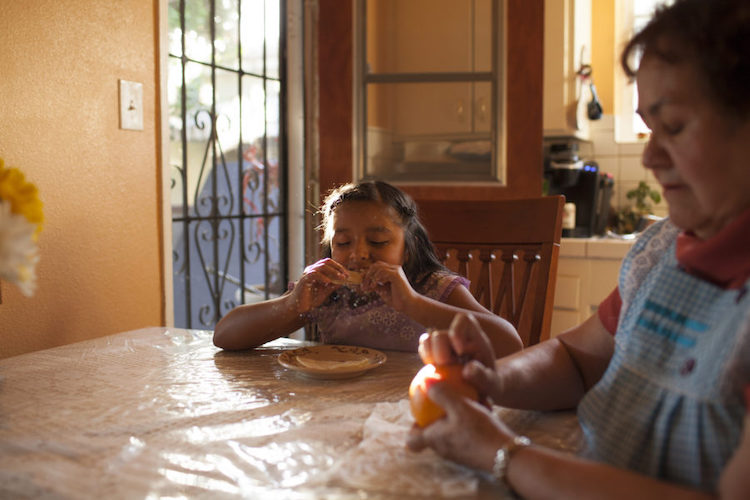
Image by Niklas Halle'n.
Cradled at the Table
As a pediatrician who specializes in childhood obesity prevention, I often meet with families who share with me the tension that comes around feeding their children. They describe this tension as a battle of wills — the well-intentioned mother trying to teach her child to eat healthier pitted against the tight-lipped son refusing to put that vegetable in his mouth, or the concerned father not wanting his overweight daughter to gain more weight, limiting her servings and the child feeling his eyes watching her every bite.
These issues are not easy. The remedy is not simple.
I am not only a pediatrician, but I am also a mother, a yogi, and an acrobat — an unusual combination of passions and identities that have brought me to this moment. When we dive deeply into our passions, we sometimes find that they lead to a common path, the same root. And that is what is happening for me.
I entered the field of childhood obesity prevention without any formal training in nutrition or weight management. While the obesity epidemic in our country has been going on for decades, our field is still relatively new. I learned and studied on the job. The predominant approach and evidence in medicine and our culture has centered on caloric balance and what foods we are eating, an approach that sometimes has the feel of a mathematical equation or scientific formula.
But I found myself surrounded by dietitians deeply immersed in caring for children with eating disorders. Their focus, while not limited to foods, was centered on how we eat — timing, eating at regular intervals — where we eat — environment, eating in a setting conducive to focusing on eating (i.e. not distracted by screens) — and with whom we eat — the feeding relationship, the relationship we have with our children around eating that often echoes our own relationship with eating.
In young children, this feeding relationship is central to a child’s growth and development. As the newborn grows to be an older infant and then toddler, they move from being completely dependent on another (usually their mother) for food to learning to eat on their own. The skills that they develop in eating go far beyond what foods they eat; they recognize their own hunger and fullness cues and build their own relationship to eating.
Picture a mother cradling a baby. This is the first feeding relationship. She encircles her newborn with her arms, holding her closely and gazing lovingly into her child’s face. The baby feels enveloped, held, secure, and loved. In this environment of security, attention, and love, the baby drinks milk and has the capacity to follow her innate hunger and fullness cues.
Within this beautiful image, pediatric dietician Barb York says, lies many lessons about the feeding relationship. When a young child feels secure and cared for, they have the space to begin to pay attention to their bodies and learn what their bodies need: to learn to eat when they are hungry, to learn to stop when they are full. This plays out in several other realms of development including potty-training, sleep, and emotional regulation. Children are body-centric. They are deeply in their bodies but are learning to understand what their bodies do and what certain sensations and feelings mean (e.g. hunger, fatigue, sadness, anger, joy).
When I am faced with families’ challenges around eating, Barb York’s image of the cradled nursing baby comes back to me and I know that the environment and relationship that a child feels when they are eating is critical to their own ability to feel their body. When we feel tension, fear, and pressure, we move out of our bodies. Our limbic system takes over and our fight-or-flight mechanisms come into play. Our mind takes over and we begin to build our strategy for escape.
In contrast, remember that last loving meal you ate. Perhaps you were surrounded by family, laughing, setting a table together, preparing for a holiday meal. Perhaps you were sitting at a restaurant with a loved one having an intimate conversation. When we are held in a metaphorical embrace at a table with the attention and caring of those around us, we have the capacity to really taste the food, to feel it in our bodies, to enjoy the process.

The feeding relationship we build with our children stems from the relationship to eating that we have with ourselves. The loving embrace can extend to our own self-compassion — our ability to be loving with ourselves around our appearance, our weight, the way we talk to ourselves around eating.
As a yogi and acrobat, we practice the paradox of holding strength and softness at the same time. When we have structure, we also have the capacity to expand and flow. For ourselves and our children, we can do the same around eating. We build a circle of security, a sense of being held and from that relationship of trust, your child — or you — can explore the relationship between food, eating, and the body in a way that nourishes one’s body and one’s heart.


Share your reflection